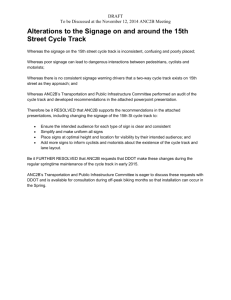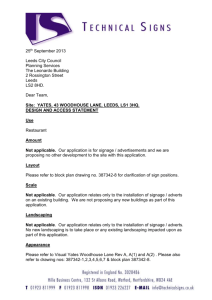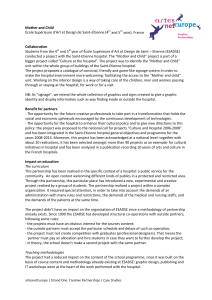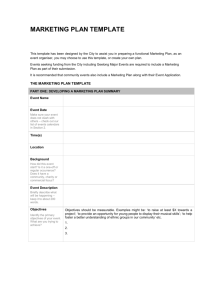Page | 1 Ch 29: SUGGESTED GUIDELINES FOR ORIENTATION
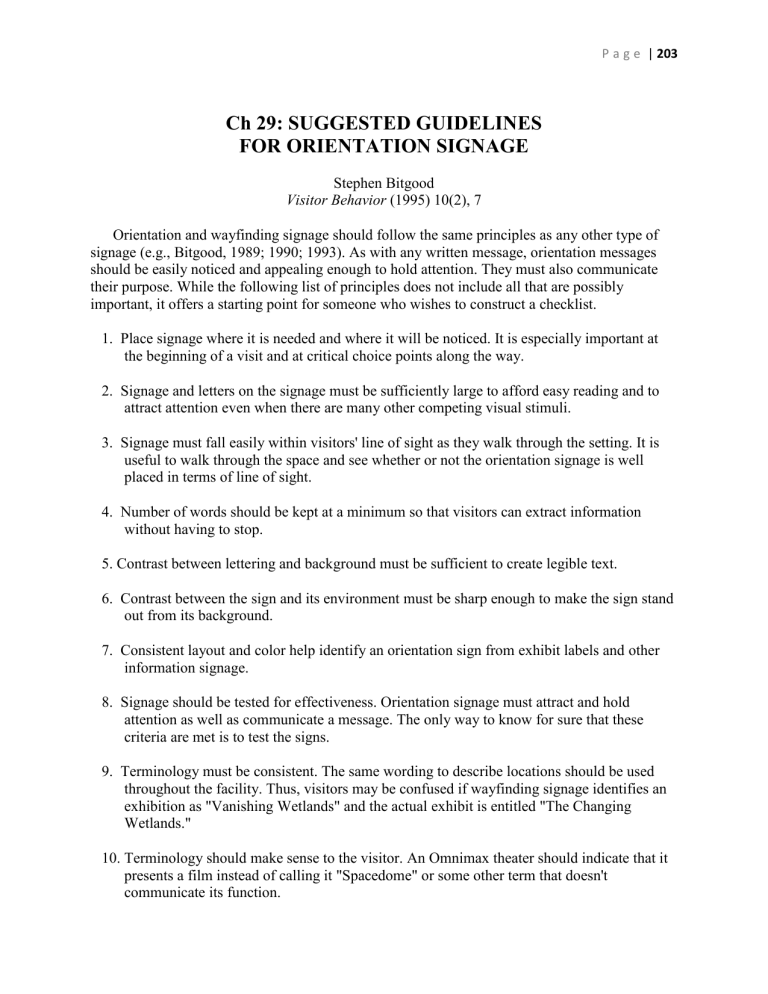
P a g e | 203
Ch 29: SUGGESTED GUIDELINES
FOR ORIENTATION SIGNAGE
Stephen Bitgood
Visitor Behavior (1995) 10(2), 7
Orientation and wayfinding signage should follow the same principles as any other type of signage (e.g., Bitgood, 1989; 1990; 1993). As with any written message, orientation messages should be easily noticed and appealing enough to hold attention. They must also communicate their purpose. While the following list of principles does not include all that are possibly important, it offers a starting point for someone who wishes to construct a checklist.
1. Place signage where it is needed and where it will be noticed. It is especially important at the beginning of a visit and at critical choice points along the way.
2. Signage and letters on the signage must be sufficiently large to afford easy reading and to attract attention even when there are many other competing visual stimuli.
3. Signage must fall easily within visitors' line of sight as they walk through the setting. It is useful to walk through the space and see whether or not the orientation signage is well placed in terms of line of sight.
4. Number of words should be kept at a minimum so that visitors can extract information without having to stop.
5. Contrast between lettering and background must be sufficient to create legible text.
6. Contrast between the sign and its environment must be sharp enough to make the sign stand out from its background.
7. Consistent layout and color help identify an orientation sign from exhibit labels and other information signage.
8. Signage should be tested for effectiveness. Orientation signage must attract and hold attention as well as communicate a message. The only way to know for sure that these criteria are met is to test the signs.
9. Terminology must be consistent. The same wording to describe locations should be used throughout the facility. Thus, visitors may be confused if wayfinding signage identifies an exhibition as "Vanishing Wetlands" and the actual exhibit is entitled "The Changing
Wetlands."
10. Terminology should make sense to the visitor. An Omnimax theater should indicate that it presents a film instead of calling it "Spacedome" or some other term that doesn't communicate its function.
P a g e | 204
11. Typeface should be easy to read. Old English or script or other such difficult-to-read typeface will influence how effectively the orientation message is communicated.
References
Bitgood, S. (1989). Deadly sins revisited: A review of the exhibit label literature. Visitor
Behavior, 4(3), 4-11.
Bitgood, S. (1990). The ABCs of label design. In Visitor Studies: Theory, Research, and
Practice, Volume 2. Jacksonville, AL: Center for Social Design. Pp. 115-129.
Bitgood, S. (1993). Putting the horse before the cart: A conceptual analysis of educational exhibits. In S. Bicknell & G. Farmelo (Eds.), Museum Visitor Studies in the 90s.
London:
Antony Rowe Ltd. Pp. 133-139.

